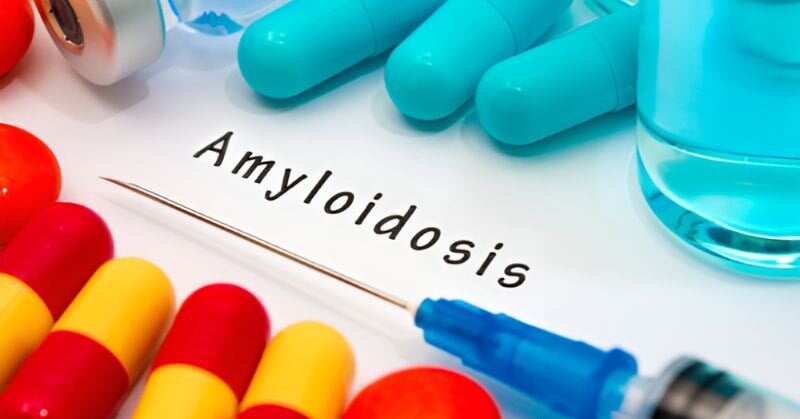Mammalian cell culture is a foundational technique in biotechnology, biopharmaceutical production, and medical research. This guide explores the key factors and best practices for maintaining high-performing mammalian cell cultures.

1. Understanding Mammalian Cell Lines
Mammalian cells offer a physiological environment similar to human tissues, making them ideal for therapeutic protein production, vaccine development, and disease modeling. They are broadly categorized into:
-
Primary cells: Derived directly from tissues, these have a limited lifespan and are sensitive to culture conditions but closely resemble in vivo behavior.
-
Immortalized cell lines: Modified to proliferate indefinitely, e.g., HeLa, HEK293, or CHO cells.
-
Hybridomas: Fusion of B-cells with myeloma cells to create monoclonal antibody-producing lines.
Commonly Used Cell Lines
-
CHO (Chinese Hamster Ovary): Gold standard for recombinant protein expression.
-
HEK293 (Human Embryonic Kidney): Ideal for transient gene expression.
-
Vero (African Green Monkey Kidney): Used in vaccine production.
-
BHK21 (Baby Hamster Kidney): Common in virology.
Cell behavior varies significantly between adherent cells (requiring attachment to a surface) and suspension cells (growing freely in medium), impacting vessel choice, media composition, and oxygenation strategies.
Table 1: Common Mammalian Cell Lines and Their Culture Needs
| Cell Line | Growth Type | Media | CO₂ | Application |
|---|---|---|---|---|
| CHO | Suspension/Adherent | DMEM/F-12 | 5% | Biologics production |
| HEK293 | Adherent/Suspension | DMEM | 5% | Transfection, gene expression |
| BHK21 | Adherent | MEM | 5% | Vaccine production |
| Vero | Adherent | DMEM | 5% |
Viral culture, vaccines |
2. Key Growth Factors and Environmental Parameters
For optimal proliferation and functionality, the following conditions must be carefully controlled:
pH Control
Most mammalian cells thrive at a pH between 7.2 and 7.4. Bicarbonate-based buffering systems require 5% CO₂, but alternative buffers like HEPES can offer additional pH stability, especially in open systems.
Temperature
The standard culture temperature is 37°C, mimicking human body conditions. Some cells, like NS0 or CHO, can tolerate mild hypothermic shifts (30–34°C) to boost protein production or extend viability.
Osmolality
The optimal osmolality range for most mammalian cells is 260–320 mOsm/kg. Deviations may cause cell swelling or shrinkage, affecting viability.
CO₂ Levels
Maintaining 5% CO₂ ensures pH balance in bicarbonate-buffered media. Variations can affect enzyme activity, gene expression, and nutrient availability.
3. Nutritional Requirements and Media Selection
Mammalian cells require complex nutrient support, including carbohydrates, amino acids, lipids, vitamins, and trace elements. The selection of media and supplementation directly impacts cell metabolism and productivity.
Basal Media
-
DMEM: High glucose and amino acid content; supports a wide range of adherent cells.
-
RPMI 1640: Used for lymphocytes and suspension cells.
-
MEM and F-12: For more specialized applications.
Supplements
-
Fetal Bovine Serum (FBS): Provides growth factors, hormones, and attachment proteins but introduces variability.
-
Insulin, transferrin, selenium (ITS): Serum-free supplements for defined conditions.
-
Glutamine and pyruvate: Support energy metabolism.
Serum-Free and Chemically Defined Media
These offer consistent results and reduce contamination risk. However, transitioning from serum-containing media often requires adaptation protocols to prevent cell shock or loss.
4. Oxygen Supply and Gas Exchange
Oxygen is crucial for energy production via oxidative phosphorylation.
Dissolved Oxygen (DO)
Ideal DO levels for mammalian cell cultures are typically 20–50% air saturation. Low DO can trigger stress responses or anaerobic metabolism.
Oxygenation Strategies
-
T-flasks and plates: Rely on passive diffusion.
-
Spinner and wave bioreactors: Use active mixing and surface aeration.
-
Stirred-tank bioreactors: Equipped with gas spargers, DO sensors, and automated feedback systems for precise control.
Proper oxygenation ensures stable cell growth and avoids lactate accumulation.
5. Culture Formats and Vessels
The choice of vessel depends on the cell type and scale:
For Adherent Cells
-
T-Flasks: Ideal for small-scale growth and maintenance.
-
Roller Bottles: Provide increased surface area for batch expansion.
-
Microcarriers: Beads that increase surface area within bioreactors, enabling large-scale adherent cell culture in suspension-like systems.
For Suspension Cells
-
Spinner Flasks: Gentle mixing keeps cells suspended and oxygenated.
-
Wave Bioreactors: Ideal for scalability with reduced shear stress.
-
Stirred-Tank Bioreactors: Industry standard for large-scale production with precise environmental controls.
6. Contamination Control and Aseptic Techniques
Contamination poses serious risks to cell integrity and experimental validity.
Common Contaminants
-
Bacteria and fungi: Rapid pH drop and turbidity.
-
Mycoplasma: Hard to detect; affects gene expression and growth.
-
Cross-contamination: Mislabeling or shared media can lead to mixed populations.
Best Practices
-
Use laminar flow hoods for all handling.
-
Employ antibiotic-free culture for sensitive assays and long-term health.
-
Test regularly using PCR, DAPI staining, or culture-based methods.
-
Keep authenticated cell banks and maintain clear passage records.
7. Monitoring and Optimization Strategies
Ensuring healthy cultures involves proactive monitoring and adaptive adjustments.
Growth Phase Tracking
-
Lag phase: Cell recovery and attachment.
-
Log phase: Rapid proliferation—ideal for passage or production.
-
Plateau: Nutrient depletion or contact inhibition occurs.
Viability and Density
-
Trypan Blue Exclusion: Manual check of live/dead cells.
-
Automated counters: For high-throughput labs.
-
MTT/XTT assays: Assess mitochondrial activity and metabolic health.
Real-Time Monitoring Tools
-
pH and DO probes
-
Glucose and lactate sensors
-
Automated cell imaging systems (e.g., IncuCyte)
Optimizing nutrient feeds, adjusting passaging schedules, and minimizing stress factors like shear or over-confluency are key for stable long-term cultures.
8. Troubleshooting Suboptimal Growth
Identifying the cause of poor cell growth involves reviewing both biological and mechanical variables:
Common Signs
-
Cell clumping or detachment
-
Slow doubling time
-
Granular cytoplasm or vacuolization
-
Medium color change (pH drift)
Possible Causes
-
Nutrient depletion: Check glucose, glutamine levels.
-
Metabolite buildup: Accumulation of lactate or ammonia.
-
Incorrect osmolality or pH: Adjust media or buffer.
-
Contamination: Perform sterility checks.
-
Passage issues: Over-confluent or damaged cells may require re-seeding at optimal density.
Re-culturing from a validated frozen stock is often the best fallback strategy.
FAQ
1. What's the best cell line for recombinant protein production?
CHO cells are the industry standard due to scalability, glycosylation fidelity, and regulatory acceptance.
2. Can mammalian cells grow without serum?
Yes, but gradual adaptation to serum-free or chemically defined media is necessary for stable performance.
3. How often should media be changed?
Typically every 2–3 days, or when pH drops and nutrients are depleted—monitor visually and chemically.
4. What causes cells to clump or detach?
Over-confluency, enzymatic stress (e.g., from trypsin), pH imbalance, or contamination can lead to detachment or aggregation.
Conclusion
Optimizing mammalian cell culture conditions is a blend of science and strategy. By tailoring nutrients, environmental parameters, and culture methods to the specific needs of your cell line, you can ensure high viability, reproducibility, and performance. Whether scaling up for biomanufacturing or running bench-top experiments, mastering these fundamentals will enhance your outcomes and support innovation in biomedical research.




